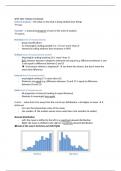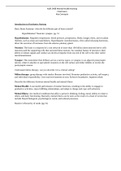Samenvatting
Summary SPSS THINGS TO KNOW - QMMC QUALITATIVE METHODS IN MEDIA AND COMMUNICATION CM2005
- Instelling
- Erasmus Universiteit Rotterdam (EUR)
SPPS things to know for the tests, very concise and good. Nice to have in combination with the QMMC summary!
[Meer zien]









